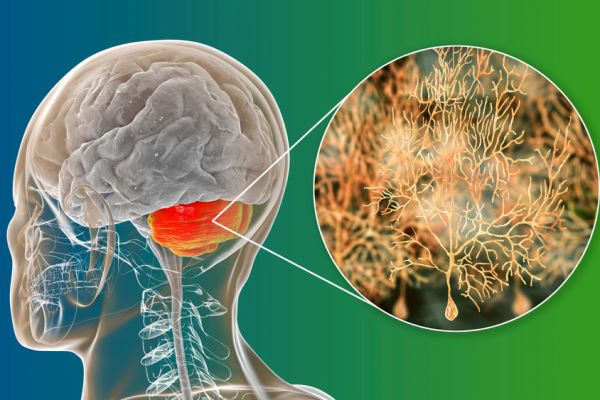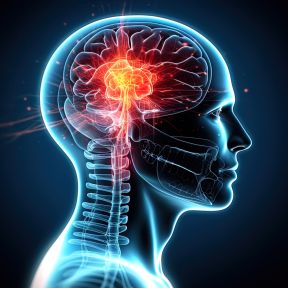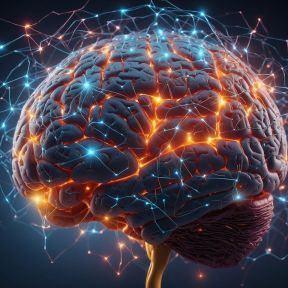How Brain Activity Is Measured
How do scientists peer into the brain to better understand what is happening, where, and why? By taking advantage of the brain’s electromagnetic properties or by sending radioactive markers into the body, neuroscientists use brain imaging technologies to create detailed pictures of neuronal activity and physiological processes. They can then analyze how the measurements of brain function vary across different situations—as people are prompted to behave, think, or feel in certain ways—or how they vary across individuals. In doing so, researchers gain clues about the brain’s workings and their links to mental illness, cognition, perception, emotion, and the many other facets of mental life.
Major types of brain imaging techniques used today include functional magnetic resonance imaging (fMRI), electroencephalography (EEG), and emission computed tomography. Each presents a different sort of neural portrait and each has strengths and limitations. So they are adopted depending on the particular needs of researchers, and sometimes used in combination.
On This Page
When new findings about the brain are reported based on “brain scans” of human beings, they very frequently involve magnetic resonance imaging (MRI). MRI employs a magnetic field to collect information about the body—it can produce cross-sectional images of various body parts, including the brain. It is the most prominent method in neuroscience for studying the structure of the brain, including differences in the structural characteristics of different people’s brains.
Since the 1990s, scientists have widely used MRI to measure changes in the brain’s function as well—a technique called functional MRI (fMRI). This approach equips researchers to analyze the activity levels in specific brain areas from moment to moment, in 3-D, with a relatively high degree of detail.
In MRI, a person lays within a magnetic field produced by a tube-shaped machine. An MRI system makes use of the magnetic properties of atoms within the body to generate detailed, three-dimensional images of the structure of body parts, including the brain. In the case of functional MRI (fMRI), the system produces images of the brain’s function, indicating whether the activity of neurons is increased or decreased in specific parts of the brain, and under what conditions.
The images generated in fMRI can show, for example, that there is heightened activity in certain brain areas during cognitive tasks, or while perceiving certain kinds of objects, or when a person does nothing in particular. Moreover, different groups of people (such as those diagnosed with a mental disorder and those with no diagnosis) may show differences in how parts of their brains function under certain conditions. In research that uses fMRI, participants are commonly given tasks to do while their brains are scanned to see how particular kinds of mental activity correspond with the activity of neurons in the brain.
In fMRI studies, BOLD stands for blood-oxygen-level-dependent. A BOLD signal is a brain imaging signal that is increased or decreased by the level of oxygen in the blood within any given part of the brain. This signal change is possible because the magnetic properties of blood hemoglobin that lacks oxygen differ from those of oxygenated hemoglobin. Since blood-oxygen levels and blood flow are related to the nearby activity of neurons, a BOLD signal is a useful way to gauge changes in neuronal activity in specific brain areas.
Descriptions of brain imaging studies often describe certain parts of the brain as “lighting up” (when someone thinks of a person they love, for example). Brain areas do not literally light up or switch on and off during fMRI studies. What the phrase really means is that those brain areas show increased activity—and therefore increased levels of blood oxygen—during the behavior under study, compared to their level of activity when one is not engaged in that behavior.
In clinical studies, fMRI has been used to explore how the functioning of the brains of people with various psychiatric disorders differs from those without the disorders. Studies that identify relatively high or low activity in certain brain areas or atypical connectivity between them among people with a particular condition can help neuroscientists seeking to understand how the condition manifests in the brain and what causes its symptoms. Neuroscientists also use fMRI to investigate how parts of the brain support social processes (such as perspective-taking), emotional processing, and countless cognitive functions. Studies using fMRI have also helped to illuminate the existence of networks of connected brain areas, such as the Default Mode Network, that show related activation in connection with particular mental functions (like daydreaming).
Unlike fMRI, which provides an indirect impression of brain cell activity based on blood flow, electroencephalography (EEG) directly measures electrical activity in the brain. EEG measurements are made non-invasively through the scalp, and they are relatively limited in terms of what they show about where in the brain activity has increased or decreased at any given moment. However, EEG captures electrical changes on the order of milliseconds, which makes it a valuable tool for analyzing brain dynamics over time.
In EEG, an array of flat metal electrodes are placed on a person’s scalp. These electrodes measure electrical signals that result from the activity of neurons in the cerebral cortex. The readings can provide a picture of voltage change on the scalp over time, including at intervals shorter than one second. EEG measures can be used as indicators of mental processes (such as perception of an image) or states (such as alertness) and can help diagnose conditions such as epilepsy or a sleep disorder. The record of brain activity produced by EEG is called the electroencephalogram.
An event-related potential is a change in the electrical activity of the brain, recorded using EEG during a specific time interval, that occurs in response to an event of interest (such as seeing a word or image). The characteristics of event-related potentials observed under different conditions—when a person recognizes different kinds of words, for example—can provide information about the extent to which the brain processes involved are similar or distinct.
The brain continues to produce electrical signals while people sleep, and EEG has a place in many sleep studies—including research on memory processing during sleep. Like functional MRI, EEG has also been used in research on mental illness, providing evidence of differences in reward processing in those with depression, for example. And unlike fMRI, EEG can be made portable: “mobile EEG” has been used to examine brain activity during real-world behaviors such as kissing a romantic partner.
Emission computed tomography takes its name from the emission of radioactive energy by tracers injected into the blood—a signature aspect of this approach to understanding the brain. Given that, emission computed tomography is more invasive than other commonly used forms of brain imaging. Like fMRI, it provides a close look at what is happening within different parts of the brain. And in addition to measuring blood flow in the brain, the method has been used to study the brain’s metabolic processes—another way of assessing function.
Two major kinds of emission computed tomography are positron emission tomography (PET) and single-photon emission computed tomography (SPECT). Each uses different types of radioactive isotopes and they are monitored in the brain using different tools.
In emission computed tomography, radioactive atoms are injected into a person’s bloodstream and are circulated into the brain. The energy they emit is monitored by external devices, providing information about their concentration in the brain. Based on the type of radioactive tracer used, this process can be used to measure blood flow in the brain or physiological processes such as glucose metabolism or neurotransmitter production. A mathematical model allows the data on radiation to be translated into information about brain processes.
Positron emission tomography (PET) allows for the analysis of physiological processes in ways other forms of brain imaging do not. For example, PET has been used to measure the amount of a protein related to inflammation in people with untreated depression. It also enables researchers to detect the release of a neurotransmitter, such as dopamine, in a specific part of the brain (during activities like listening to music).














